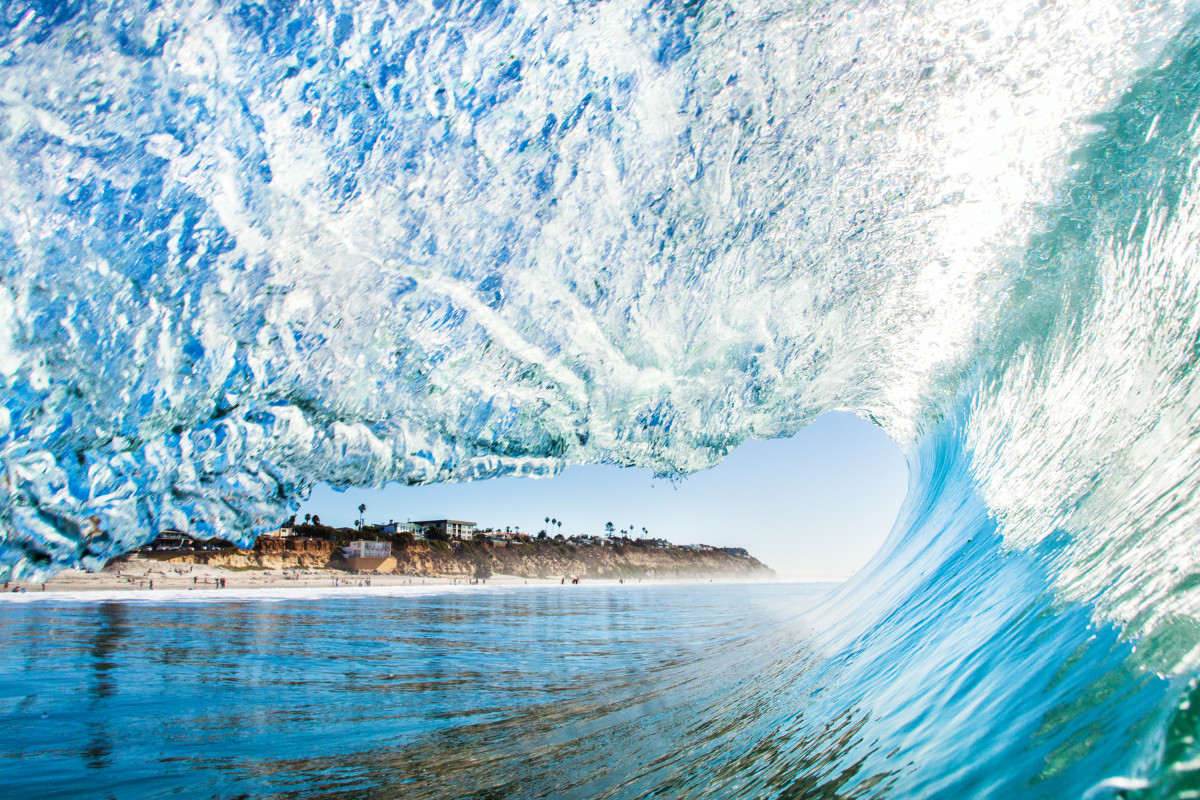
Mello via Getty Images
There’s something about ocean spray that enchants us all, not least of those of us who fancy being slung out of a resplendent, spuming cylinder of H2O. But a recent Stockholm University study suggests this quintessence of our pursuit and of immaculate freedom might, in a sense, be anything but. In a day and age when we have to mull about knowing everything from sex to the sun can kill us, sea foam may be one more thing.
PFAS, or Per- and Polyfluoroalkyl Substances, are synthetic chemicals conceived in the 1930s and found in everything from non-stick teflon to cleaners, textiles, leather, paint, paper, and so on. They’re colloquially known as “forever chemicals” because as far as scientists know, they’re so good at what they do that they don’t ever decompose. Granted, those now-obsolete nonstick pans comprising PFAS flaked into your food and down your gullet in a New York minute.
Indeed, most of us are familiar with—and perhaps appreciative of—them due to their forgiving qualities atop the stove, but they’re found in an array of outdoor apparel and equipment, most critically employed to repel water and douse fires.
The National Institute of Health refers to PFAS as “one of the strongest compounds in organic chemistry; one that has proved to be resistant to heat, water, oil, and time.” Linked to various cancers, liver and kidney complications, and birth defects, among other things, PFAS are a running list of 15,000-plus organic chemicals that are uniquely resilient travelers by land, sea, and atmosphere.

McDonnell via Getty Images
And while it was previously thought that PFAS diluted and/or sank out of sight and much out of mind in the world’s oceans, Stockholm U’s research along the shorelines of the UK and Chile uncovered something far more pernicious to humankind, particularly to those of us that tend to frequent the shore in its frothier states: Levels of PFAS in sea spray are some hundreds of thousands times higher than within the water column.
Doomy and gloomy as this all may sound, we had to reach out to Surfrider to ask how serious this really is for wave-gliding folk, and whether we shouldn’t all just call it, trade our wetsuits for snow bibs, and take up snowboarding à la Gerry Lopez.
“We thought PFAS were going to go into the ocean and would disappear,” the study’s lead author, Ian Cousins, told the Guardian, “but they cycle around and come back to land.” That they’d appear back at the feet of we who wrought them is a poetic justice and a karmic fate not to be lost on anyone, and certainly not anyone reading this publication. After all, these very chemicals are found in everything from surf waxes to flip flops, sunscreens, and swimwear and each and most every surfer is, in some small way, contributing to this grievous sin and killing the very thing we love.
Related: What Are the Dirtiest (and Cleanest) Beaches in California?
Manufacturers, however, bear the brunt of the weight, and some US states have taken action; California passed multiple bills that will ban PFAS in most textiles and food service items (with a threshold of 100 parts per million), and Maine banned PFAS outright in 2023. Dozens of other states have similar bills on their dockets, and other academic studies similar to Stockholm U’s abound.
“This research is an important reminder about the need to stop pollution at the source,” Trey Highton, Surfrider Foundation’s Senior Communications Manager told SURFER. “Be it sewage, chemicals or plastics, once these harmful substances enter our environment, the effects are far-reaching. It’s not just a water quality issue — these pollutants become airborne and some can travel far distances.”
Far distances and then some. PFAS have been detected in everything from penguin eggs in Antarctica to Arctic polar bears and everywhere in between, but what’s more? It is also in at least 99% of the blood of all Americans tested.

Kyle Sparks via Getty Images
Last fall, a seminar was held by Stockholm University, in which Cousins et al. shared their findings vis-a-vis surfers and coastal dwellers. “Concern has been expressed for the effect of the high PFAS levels on for example surfers and near-shore grazing animals,” said Stockholm University’s Matt Salter, a Marine Biogeochemist who worked on the study. “However, for transportation, the sea spray aerosols are more important, as the foam itself is quite heavy and won’t travel very far.”
But those smaller aerosol molecules that do travel far make land as far as thousands of kilometers inland, then pass through the ground and waterways and back to the sea, creating what Stockholm University dubs “an almost never-ending transportation cycle.”
“The health impacts [of PFAS] are still unknown,” Highton conceded, “but the cause and solutions are clear — we must stop allowing industry to treat our ocean and waterways as dumping grounds.”
Withholding any bleak pretensions of what PFAS may or may not do to us humans, our fellow creatures, and our little blue planet writ large is essential to keeping discourse open. All the same, Highton and Surfrider are right: the onus, as ever and always, is on the makers. But some brands are doing away with manufacturing apparel containing PFAS altogether, and we can vote with our dollars. In the meantime, there’s no need to make haste and head for the high country just yet, briny brethren. PFAS may already be swimming within all our vascular systems, so too is the sea, forever and always. The good with the bad; the yin with the yang.
Related: NOAA Scientists Say La Niña is (Likely) Coming Back

